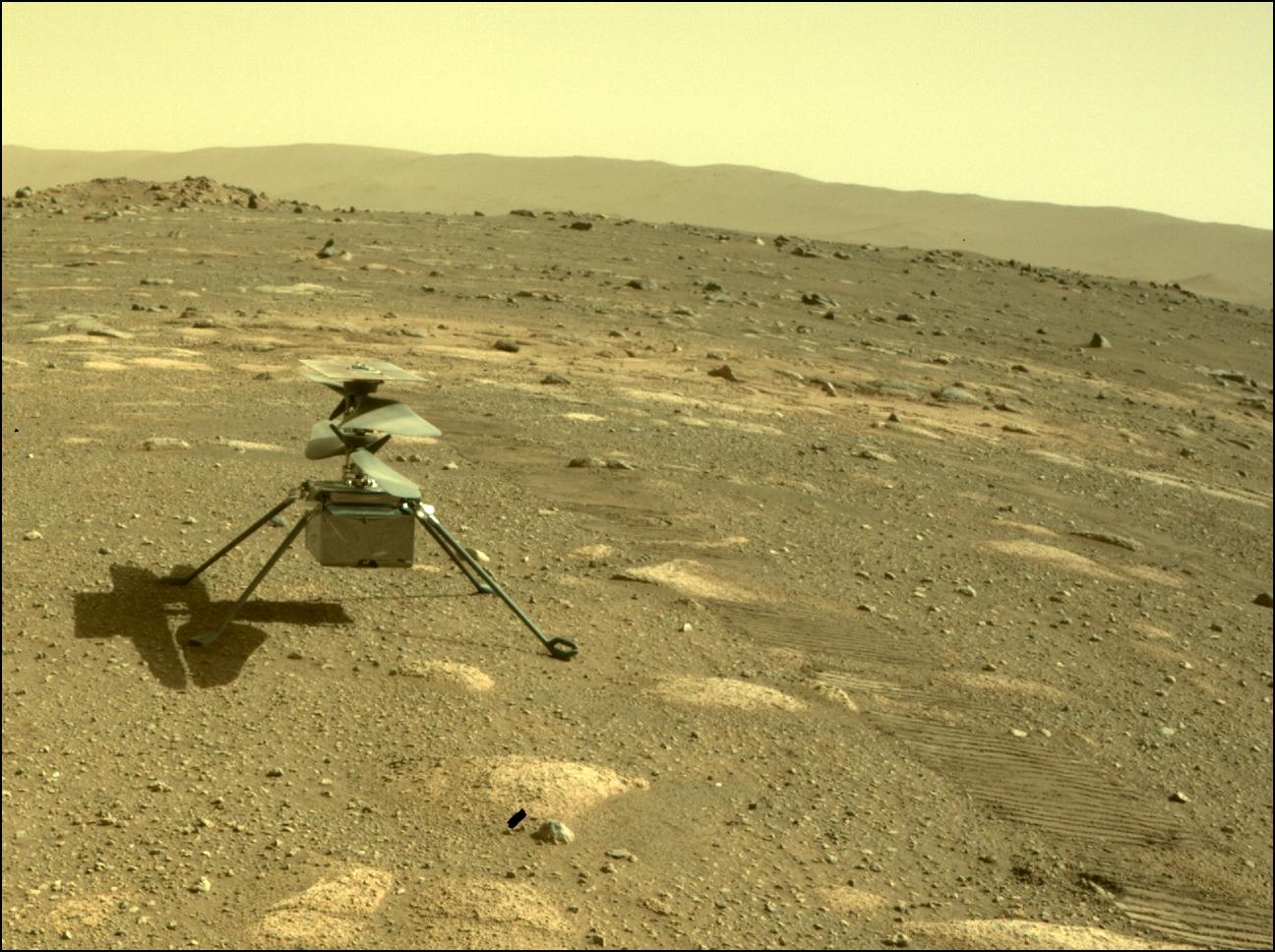Nasa’s Mars helicopter wins award and gears up for longest flight yet
After winning a prestigious aerospace award, the Nasa Ingenuity team are preparing for the helicopter’s longest flight yet on Mars

Nasa’s Ingenuity Mars helicopter has had a big week. After completing its 24th powered flight on the Red Planet on 3 April, its performance garnered the Ingenuity team at Nasa’s Jet Propulsion Laboratory a prestigious aerospace award, the Collier Trophy.
But the coming days could be even bigger, as Ingenuity prepares to make a record-breaking flight on Mars sometime in the coming days to begin exploring a dry river delta in the Jezero Crater on the Red Planet.
Ingenuity is a small — 1.8 kilograms, 48 centimeters tall — twin rotorcraft that landed on Mars with the Perseverance rover on 18 February 2021. Ingenuity first took to the Martian skies on 19 April last year, a tense moment for the Ingenuity team, since, as associate administrator of Nasa’s Science Mission Directorate Thomas Zurbuchen said in a recent statement, “we didn’t even know if powered, controlled flight of an aircraft at Mars was possible.”
But the first flight was a success, the helicopter hovering for 30 seconds before safely returning to the ground. Since then, Ingenuity has flown as far as 80 metres in one flight, serving as an aerial scout for the Perseverance rover as the two robotic instruments explore Jezero Crater.
Powered flight with a rotorcraft is difficult on Mars, as JPL scientists described in a recent blog.
Although Ingenuity is small and light, the Martian air is very thin, forcing its twin, 1.2-metre-long rotor blades to spin between 2,500 and 2,70 rotations per minute. Engineers have had to take into account seasonal variations in the density and temperature of the Martian atmosphere that could force the helicopter’s blades to spin faster, which could then shorten the amount of time the solar and battery-powered helicopter could remain airborne.
On Tuesday, the careful engineering and operations that went into Ingenuity’s successes earned the Ingenuity team at JPL the Colliers trophy, which is given annually by the U.S. National Aeronautic Association for the best achievements in aerospace in America. Past recipients include Chuck Yeager and the team that built the X-1 Bell aircraft that first broke the sound barrier, and the Apollo 11 astronauts, Neil Armstrong, Buzz Aldrin, and Michael Collins.
Next up for Ingenuity is its longest flight yet, a 704-metre jaunt to the northwest that will take the helicopter out of the Séítah region of Jezero crater and into a dry delta region. Its aerial imaging will help the Perseverance team decide which of two dry riverbeds the rover should take on its journey to the top of the delta region, as well as help identify science targets on the ground.
Together, Ingenuity and Perseverance are the bleeding edge of Nasa’s Mars program. Not only demonstrating the first-ever controlled, powered flight on another planet but laying the groundwork for a historic astrobiology mission, as Perseverance has been caching Martian soil samples that are scheduled for retrieval sometime in the early 2030s.
Once they are returned to Earth, scientists will be able to study the samples with more tools at their disposal than humans have ever landed on Mars, and possibly answer the question of whether there is, or ever was, life on Mars for certain.
Join our commenting forum
Join thought-provoking conversations, follow other Independent readers and see their replies
Comments
Bookmark popover
Removed from bookmarks